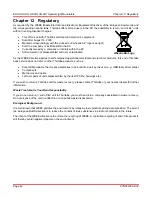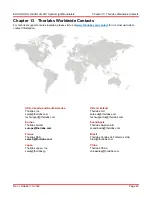
EXULUS-HD1 & EXULUS-4K1 Spatial Light Modulators
Chapter 7: Application Note: Displaying CGH Patterns
Rev I, October 18, 2022
Page 33
Chapter 7
Application Note: Displaying CGH Patterns
7.1.
Holographic Projection
We show here a holographic projection as one of the applications of the Exulus SLM. Figure 31 shows a typical
setup required to realize a 2D holographic projection using the EXULUS-HD1. A collimated laser beam is incident
on the SLM panel; best results for holographic projection are obtained using a beam size just smaller than Ø7 mm.
The incident beam passes through a polarizer and a half-wave plate such that it is polarized at 45°, the direction of
the optic axis of the panel. The target projection image is first converted into a computer generated holography
(CGH) pattern that is calculated by the bundled software (accessed through the CGH tab in the software). The
output beam is separated from the incident beam with a beam splitter. Within the SLM software, a focusing effect
is added to the CGH pattern; if you do not desire to have the SLM provide focusing, set the focal length to an
extremely long value. In this example, we have set the focal length to 100 000 mm (at the laser wavelength of 635
nm), checked the "Invert Image" box to set the image outline to be bright in the projected pattern, and set the
position to "Fit" so that the entire image is visible on the preview. Since CGH relies on far-field diffraction, a set of
imaging lenses is required to produce a sharp holographic image on a screen (in this example, first lens: f = 50 mm,
second lens: f = 75 mm). Figure 32 shows the holographic image to be projected and the corresponding CGH
pattern, which is calculated using the bundled software. The resulting holographic projection is shown in Figure 33.
Figure 31 Setup for CGH using the EXULUS-HD1 SLM. In this case, the focusing effect added to the
CGH is set to a 100 000 mm focal length.












































